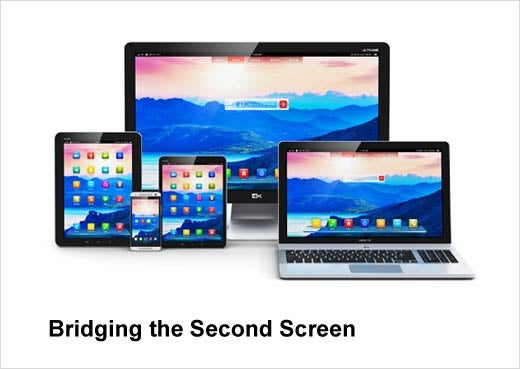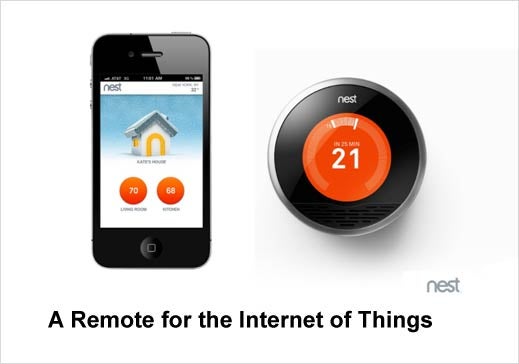In 2013, the Apple App Store generated $10 billion in downloads. And both the Google Play Store and Apple App Store attracted over 50 billion downloads. For 2014, the momentum is likely to continue, but in a variety of directions. From spatial sensitivity for tracking exercise habits to having the power of IBM Watson on-the-go, 2014 will host exciting progress in the mobile development space.
Executives from Icreon Tech, along with members of their software development teams, have collaborated to prioritize the most important mobile development trends for 2014. For businesses, brands and independent developers, this advice from Icreon Tech leadership will help guide successful mobile strategies for the upcoming year.
Click through for 10 hot mobile development trends to watch in 2014, as identified by Icreon Tech.
The Beautification of the Web
Now that 4K and Retina screens are proliferating throughout the globe, mobile users will become especially discerning when it comes to mobile websites and apps. In an effort to compensate, mobile developers will incorporate smooth transitions for functions such as refreshing a page, opening a drop down, clicking a link on the home bar, and progressing through a slideshow. Specifically when it comes to mobile websites, the transitions for browsing and interaction will receive special attention. In 2014, expect mobile websites to increasingly resemble mobile apps.
New Contenders for Mobile OS
In 2014, feature phones will finally phase out. Thanks to innovation in mobile operating systems (OS) from Mozilla, former engineers from Nokia, and others, basic feature phones will be replaced by cheap phones with fully functional OSes and apps. Mozilla’s mobile Firefox OS is aimed at emerging markets where many people cannot afford high-end smartphones. Former engineers from Nokia went ahead and produced their own smartphone, the Jolla, which runs a proprietary OS called Sailfish. There is also a mobile Ubuntu OS. In 2014, expect a growth of options when it comes to OS types for mobile.
IBM Watson Will Make Apps Think
The same machine that beat multiple Jeopardy champions and is capable of analyzing 40,000 medical journals an hour will now be accessible via smartphone. IBM has made the Watson API publicly available to developers worldwide. The North Face is an early mover, incorporating Watson’s contextual analysis engine for its customers. Shoppers can ask natural language questions to The North Face kiosk software that is integrated with Watson. For instance, a father can ask “What should I bring for a camping trip with my two young daughters?” IBM Watson will create a contextual response that attends to variables like weather, age, sex and location. In 2014, get ready for mobile apps that are more aware and contextual when it comes to interaction.
Apple Sets a Standard for Mobile Processors
With the release of the iPhone 5S came the A7 chip that boasts a 64-bit processor. Marked as a new benchmark when it comes to mobile processors, the A7 chip will jump-start performance capabilities in the mobile hardware industry well beyond Apple’s smartphones. Popular chip maker Qualcomm and electronics giant Samsung promise to incorporate comparable chips throughout their 2014 product lines. From a mobile development standpoint, the chip will allow for increased performance in terms of graphics and memory for mobile apps.
Measuring Fitness Beyond a Bracelet
Technology that powers FitBit and other tracking hardware will come to many smartphones in 2014. Although much of the capabilities are already possible through a smartphone, innovations in the way coprocessors work will reduce energy consumption, allowing the tracker to work while a device is idle. Pioneered by the MotoX and its innovative X8 co-processor, spatial sensitivity is set to come to many smartphones throughout 2014.
Watching How You Shop
The iBeacon is a type of Bluetooth sensor embedded within the iPhone 5S, with greater range and connectivity. Apple is set to use the iBeacon within its Apple Stores to better assess layouts and customer behavior through the tracking of iPhone signals. For other smartphones, services and products are currently under production that will allow for similar functionality. Essentially, brick-and-mortar stores are set to engage in in-store mobile tracking that replicates the capabilities of online tracking software. Thanks in part to mobile device proliferation, retail stores will begin replicating online marketing strategies in the physical world.
Windows Makes Its Mark on Mobile
Surprisingly one of the biggest trends in mobile development, as well as throughout the web, came from Microsoft. With the release of Windows Phone and Windows 8 and the heavy incorporation of flat design, large technology companies like Apple and Google quickly followed suit. Apple’s updated iOS7 incorporates flat design throughout the entire operating system as well as its proprietary apps. In 2014, expect the flat design approach to appear on popular news and corporate websites, as well as popular mobile apps and web design in general.
Bridging the Second Screen
A recent Nielsen study found that “88% of U.S. consumers use mobile as a second screen while watching TV.” In an age when switching between devices is commonplace, mobile developers and brands are beginning to capitalize. Marketers will likely bridge apps to interact with smart TVs and other TV-embedded hardware. It has already started with XBox One and the SmartGlass app, which acts as an immersive hub for movies, music and games. Twitter is also leading the charge with an extensive NFL partnership. The social media giant will be central to promotional TV campaigns on mobile for the NFL next year. In 2014, expect a notable rise in apps that provide immersive second screen experiences.
A Remote for the Internet of Things
Google’s purchase of smart-home appliance maker Nest for $3 billion is a crucial step forward for the Internet of Things. Analysts and thought leaders at IBM, Intel and Google have contributed to serious hype regarding smart cities, embedded sensors, and the concept of connected objects. In 2013, Nest released a smart smoke detector that is completely controlled via smartphone. Samsung has also released a Wi-Fi equipped washing machine. In 2014, expect such applications to rise in popularity as sensors become more affordable and brands begin to experiment.
Swapping Passwords for Fingerprints
Apple again set another major benchmark in the mobile space with the iPhone 5S fingerprint sensor. Heralded by analysts as a potential progression beyond the password, it received substantial marketing buzz and positive reception from customers. Icreon Tech sees legitimate potential for incorporating the fingerprint sensor within enterprise applications for additional security. Apple’s competitors have announced plans to include fingerprint or comparable biometric functionality in devices throughout 2014.













